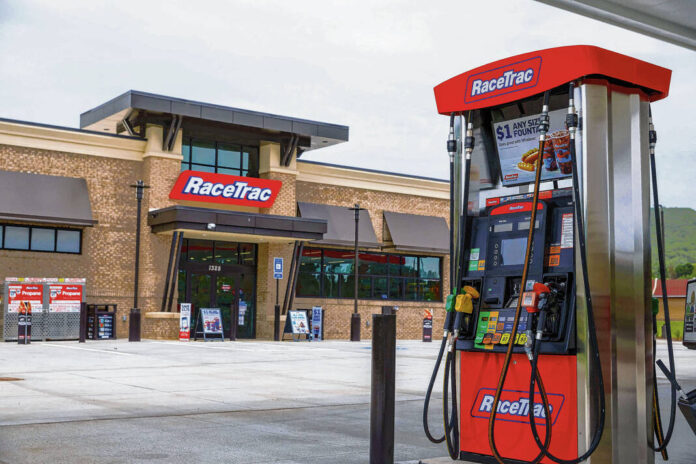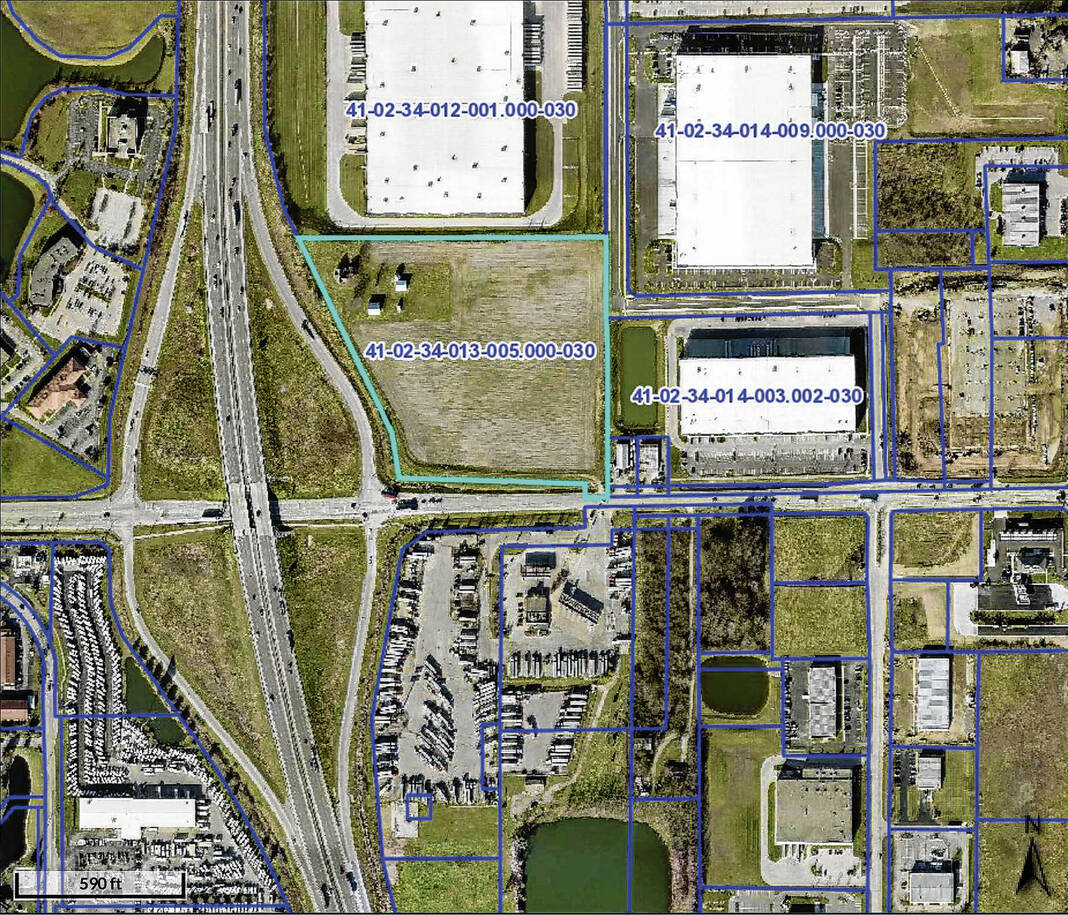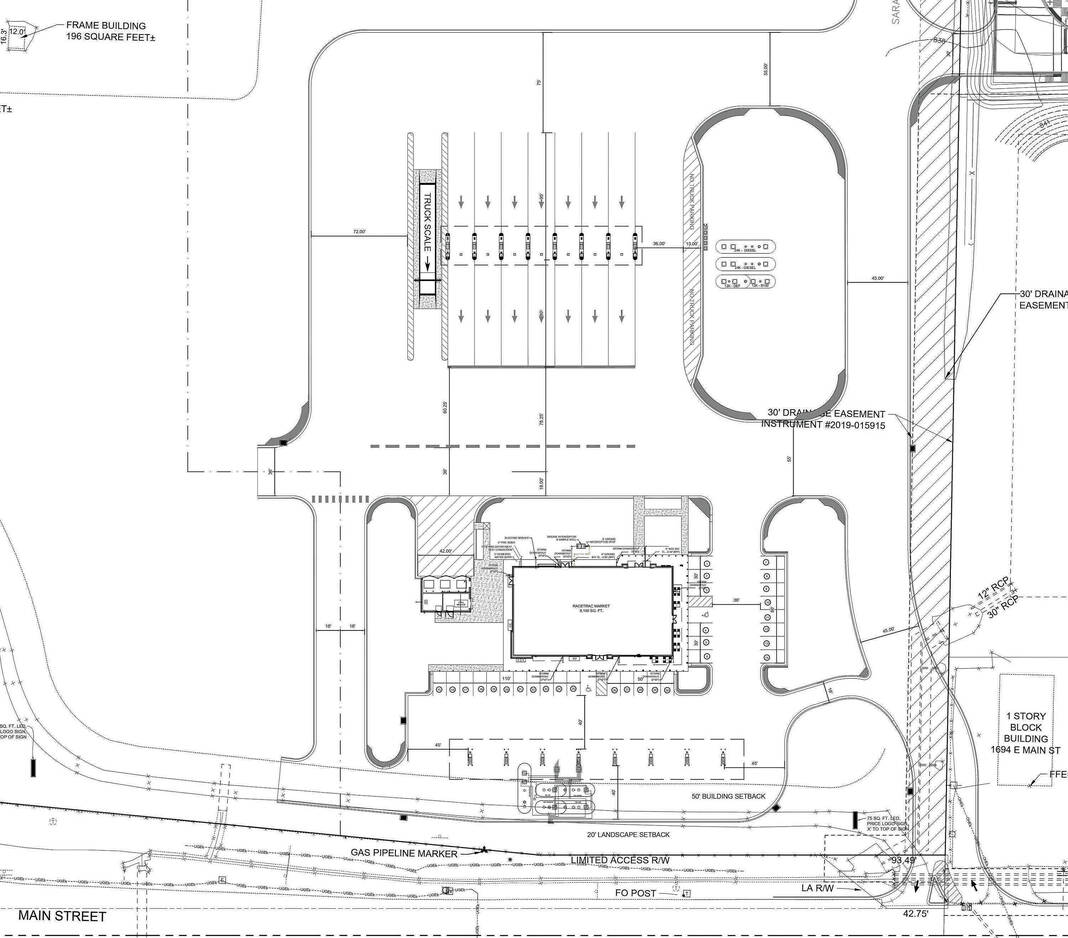The decision on whether a proposed gas station can be built at Greenwood’s Main Street Interstate 65 interchange will have to wait until at least next month.
Following a deadlocked 2-2 vote Monday night, the city’s Board of Zoning Appeals delayed their decision on two zoning variances that would either allow or limit the ability for a RaceTrac gas station to be built at the northeast corner of the Main Street I-65 interchange. The property is south of the ULTA Beauty Distribution Center and west of a U-Haul neighborhood dealer.
Atlanta-based RaceTrac had come before the BZA to request a variance to allow a gas station on land zoned industrial medium. Gas stations are currently only allowed under commercial medium and large zoning, city documents show.
They also requested a second variance to allow the gas station to have more fuel stations than allotted and allow the station to be built less than 600 feet away from another gas station. Road Ranger is located across Main Street to the south, according to city documents.
The board had voted in the 2-2 deadlock on the first use variance for the approximately 15.5-acre property. The second variance request was not voted on and continued as it was contingent on the approval of the first.
This is the second time a proposal from RaceTrac has come before the BZA in the last five months. In August, the company came before the BZA to ask for variances to build a truck stop on the same parcel of property. The BZA ultimately voted 3-2 to deny those variances. During the public hearing on the proposal at the time, Eric Prime, an attorney representing Road Ranger, expressed concerns about the proposal’s traffic study from 2020 and how RaceTrac wanted to have overnight parking along Main Street.
City council member David Hopper also testified against the proposal in August, saying the city’s Unified Development Ordinance prohibited a truck stop from being there because that’s what the city council wanted. There are plenty of other options for what could go on the property, he said in August.
Since the August meeting, RaceTrac officials had made changes based on the concerns brought up by Prime and Hopper. Unlike the first proposal, the latest one does not include truck parking and they also removed an entrance to the property, Russell Brown, an attorney representing RaceTrac, told the BZA on Monday.
For the development standards variance, RaceTrac wants to have 16 fuel stations on the property with 23 gas pumps, Brown said. City ordinance limits the maximum number of fuel stations to eight, and the number of pumps to 16.
The variance is also needed in order to allow the gas station to be built less than 600 feet away from Road Ranger. City ordinance says two fuel uses cannot be within 600 feet of each other at the same intersection.
However, it is not clear if the Main Street and Interstate 65 interchange is classified as an intersection, so RaceTrac filed for the variance anyway, Brown said.
“A strict reading of your ordinance doesn’t classify I-65 and Main Street as an intersection, even though we think it functionally is,” he said.
During the public hearing Monday evening, Prime once again brought up concerns about the project on behalf of his client, Road Ranger. His client disagreed with part of RaceTrac’s justification of the variances, which referenced a peculiar nature to the property.
“In this case, what I heard and what you were told, was that they actually could put a convenience store gas station on the property tomorrow, but it could be not as big as they wanted,” Prime said. “That’s the problem here. What’s peculiar about this property that requires them to have a larger store?”
The hardship from the land results from its limited access as the result of the interstate. It limits development for the property, and RaceTrac is willing to take a risk no other developers were wanting to, Brown told the board.
“But to do that, they have to have a larger footprint store,” he said.
Prime’s client knows the land will be developed, but the UDO’s requirement exists out of common sense. His client just wants to make sure RaceTrac is compliant, he said.
Prime also questioned why the developer didn’t just bring it to the city as a rezoning proposal. Board member Josh King echoed a similar sentiment, saying a rezoning proposal would end the debate once and for all.
Brown told the board that when the conversations started on developing the land in 2020, the suggestion was to use variances as the city was still updating its UDO. Variances were also ultimately chosen as it limits what can go on the property, he said.
Filing for the variance was also advised by the city’s planning department, acknowledging the difficulty of developing the land with the interstate’s right of way, planning director Gabe Nelson said.
When it came time to vote on the use variance, board members Ken Knartzer and Vickie Peters voted for approval while King and Chris Mull voted against it. A continuance was ultimately granted for both petitions as a result of the deadlock.
Normally the BZA has five members, however, they currently only have four following the resignation of former member Trent Pohlar late last year. A replacement has not yet been named by the city’s Advisory Plan Commission, which is responsible for filling the seat.
Both variances are expected to be before the BZA again at its Feb. 13 meeting. However, if another member has not yet been appointed by then, it would likely be continued to early March, Knartzer said.









